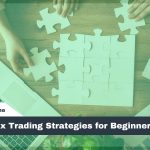
How to Build a Robust Forex Trading Plan

Building a robust forex trading plan requires establishing clear performance objectives, including risk-reward ratios of 1:2 and realistic annual returns of 10-20%. Traders must develop systematic market analysis combining technical, fundamental, and sentiment approaches while implementing strict risk management protocols limiting 1-2% capital per trade. Essential components include selecting regulated brokers with low spreads, utilizing reliable charting platforms like MetaTrader 4, and conducting thorough backtesting over 5-10 years of historical data. Proper documentation guarantees tax compliance and regulatory adherence for sustained success.
Table of Contents
Why a Forex Trading Plan Matters
A thorough forex trading plan establishes clear performance objectives that define measurable targets for profitability, risk tolerance levels, and time-based milestones that guide decision-making throughout market cycles. Statistical evidence reveals that traders operating without formal plans demonstrate considerably lower success rates, with studies indicating only 10-20 percent of retail participants achieve consistent profitability while unstructured approaches increase strategy abandonment rates by approximately 30 percent. Market analysis fundamentals become more effective when integrated within a structured framework, as predetermined criteria for technical and fundamental evaluation prevent emotional interference and maintain consistency across varying market conditions.
Setting Clear Performance Objectives
Setting precise performance objectives forms the foundation of any effective forex trading plan, as these measurable targets transform abstract hopes into concrete benchmarks that guide decision-making and evaluate progress. Successful traders typically establish a risk-reward ratio of 1:2, meaning they target profits twice the size of potential losses on each trade. Target return on capital should reflect realistic market conditions, with many professional traders aiming for 10-20 percent annual returns rather than unrealistic expectations. Maximum drawdown limits prove equally critical, as traders who restrict losses to 10-15 percent of their capital demonstrate 40 percent higher success rates in capital preservation. Win-loss ratios provide additional clarity, helping traders understand that profitability depends more on managing losing trades effectively than achieving perfect accuracy in market predictions.
Success Rate Insights
Numerous studies across the forex industry reveal stark realities about trading success that underscore the critical importance of structured planning and realistic expectations. Industry reports consistently demonstrate that approximately 75 percent of new forex accounts lose money within the first year of trading. This sobering statistic highlights the challenging nature of currency markets and the prevalence of unprepared participants who enter without adequate planning or risk management protocols.
Conversely, performance analytics indicate that the top 5 percent of traders achieve annual returns exceeding 20 percent, distinguishing themselves through systematic approaches and disciplined execution. These profitability benchmarks illustrate the significant gap between successful and unsuccessful traders. Retail forex statistics emphasize that consistent winners typically employ well-defined trading plans, while those who rely on intuition or emotion frequently join the majority who experience losses.
Market Analysis Fundamentals
Successful traders distinguish themselves from the losing majority through systematic market analysis that forms the foundation of their trading decisions. Three primary analysis methods guide effective forex strategies: technical, fundamental, and sentiment analysis. Technical analysis examines price charts, patterns, and indicators like Moving Averages and RSI, with over 80 percent of retail traders incorporating these tools. Fundamental analysis evaluates economic data, central bank policies, and geopolitical events that drive currency movements. Major economic releases, such as non-farm payrolls, frequently generate price swings exceeding 100 pips. Sentiment analysis gauges market psychology through positioning data and volatility indices. Successful trading plans integrate multiple analysis types rather than relying on single approaches, creating thorough frameworks that identify high-probability trade setups while filtering out market noise and emotional impulses.
Having examined the critical elements of a robust forex strategy—from the necessity of a formal plan to the integration of multi-layered analysis—it’s useful to distill these insights into a concise reference that highlights key findings, data points, and practical steps. The table below brings together the most impactful takeaways and shows exactly how to put them into action.
| Focus Area | Core Insight | Data Point | Practical Application |
|---|---|---|---|
| Importance of a Trading Plan | Structured planning boosts consistency and minimizes emotional interference | Only 10–20 % of traders achieve consistent profitability; unstructured approaches raise abandonment rates by ~30 % | Draft a written plan outlining measurable objectives, risk-tolerance thresholds, and predetermined analysis criteria before executing any trade |
| Setting Performance Objectives | Defining clear, quantifiable targets (risk-reward, drawdown, win-loss) anchors decision-making | Traders limiting drawdowns to 10–15 % demonstrate 40 % higher capital preservation | Set a realistic annual return goal (e.g., 10–20 %), cap maximum drawdown at 10 %, and monitor win-loss ratio monthly to guide adjustments |
| Success Rate Insights | Discipline and systematic execution separate winners from the majority of losing traders | Approximately 75 % of new forex accounts lose money in year one; top 5 % of traders achieve >20 % returns | Adopt a rule-based trading approach, review performance weekly against benchmarks, and avoid emotional or intuitive trades that deviate from your plan |
| Market Analysis Fundamentals | Combining technical, fundamental, and sentiment analysis identifies high-probability setups | Over 80 % of retail traders use technical indicators; major economic releases can trigger 100+ pip swings | Create a pre-trade checklist that integrates chart patterns (e.g., Moving Averages, RSI), scheduled economic events, and sentiment indicators to validate entries |
This organized snapshot not only reinforces why each element matters but also shows precisely how to integrate these best practices into a real-world trading routine—turning theory into consistent performance.
Crafting Your FX Strategy Template
Creating a systematic forex strategy template requires establishing three fundamental pillars that form the backbone of consistent trading performance. The framework must incorporate precise entry and exit criteria that remove subjective decision-making, thorough risk management protocols that protect capital through calculated position sizing, and structured discipline mechanisms that maintain adherence to predetermined rules. These interconnected components work together to transform abstract trading concepts into actionable guidelines that can be executed consistently across varying market conditions.
Entry & Exit Strategy Framework
Although many traders possess market knowledge and analytical skills, they often struggle with consistent execution due to poorly defined entry and exit criteria. A systematic entry and exit strategy framework eliminates guesswork by establishing quantifiable rules based on specific indicators, timeframes, and price action triggers. Entry signals should incorporate precise thresholds, such as moving average crossovers, RSI levels, or candlestick patterns that occur at predetermined support or resistance zones. Exit rules must define both profit targets and stop-loss levels before trade execution, utilizing risk-reward ratios of at least 1:2. Backtesting demonstrates that strategies with well-defined entry and exit parameters can improve win rates by 15 percent compared to discretionary approaches, emphasizing the importance of standardized trade triggers over emotional decision-making.
Managing Risk & Position Sizing
While precise entry and exit criteria form the backbone of systematic trading, their effectiveness depends entirely on proper risk management and position sizing calculations. Traders who allocate 1-2 percent of capital per trade historically maintain annual equity fluctuations under 20 percent, compared to 50 percent or more for those risking 5 percent per position. Position sizing calculations involve determining trade size based on account balance, predetermined risk percentage, and distance to stop-loss level. This methodology guarantees consistent exposure regardless of currency pair volatility or market conditions. Stop-loss orders limit downside risk, while take-profit levels secure gains at predetermined targets. Effective money management prevents catastrophic losses that can eliminate trading accounts, allowing traders to survive inevitable losing streaks and capitalize on profitable opportunities when market conditions align with their strategy.
Cultivating Trading Discipline
Successful forex traders distinguish themselves not through superior market predictions, but through unwavering adherence to predetermined rules that govern every aspect of their trading behavior. Trading psychology research reveals that emotional decision-making undermines even the most sophisticated strategies, leading to overtrading, revenge trading, and premature exits driven by fear or greed.
Disciplined traders implement behavioral guidelines through structured checklists that verify entry conditions, position sizing parameters, and exit criteria before executing any trade. This systematic approach eliminates impulsive decisions while reinforcing consistent execution patterns. Surveys demonstrate that traders who follow predefined rules ninety percent of the time outperform discretionary traders by twenty-five percent annually, highlighting the quantifiable benefits of behavioral finance principles applied to forex trading strategies.
Having outlined the three pillars—precise entry/exit rules, robust risk controls, and unwavering discipline—let’s distill these components into a concise reference. The table below highlights key insights, supporting data, and practical steps to turn your FX strategy template from concept into consistent execution.
| Focus Area | Core Insight | Data Point | Practical Application |
|---|---|---|---|
| Entry & Exit Strategy | Quantifiable rules reduce guesswork and emotional errors | Defined parameters boost win rates by 15 % compared to discretionary trading | Use moving average crossovers, RSI thresholds, and candlestick patterns at support/resistance; set 1:2 risk-reward targets before entry |
| Risk & Position Sizing | Consistent risk allocation protects capital and smooths equity fluctuations | Risking 1–2 % per trade keeps annual drawdowns under 20 %, versus 50 % when risking 5 % | Calculate position size based on account balance, chosen risk % per trade, and stop-loss distance; always employ stop-loss orders |
| Trading Discipline | Following predefined rules outperforms intuitive trading and prevents impulsive decisions | Traders adhering to rules 90 % of the time outperform discretionary peers by 25 % annually | Implement a pre-trade checklist verifying entry criteria, position size, and exit rules; avoid overtrading by sticking to plan guidelines |
Step-by-Step: Building Your FX Roadmap
Constructing an effective forex trading roadmap requires three fundamental decisions that form the foundation of any successful trading operation. Traders must first establish their technological infrastructure by selecting an appropriate broker and trading platform that aligns with their execution requirements and regulatory preferences. Following this foundation, they need to define their trading approach by choosing a specific trading style and timeframe, then determine their financial framework through careful capital allocation and leverage planning.
Choosing a Broker & Platform
How does one navigate the overwhelming array of brokers and trading platforms available to forex traders today? The selection process requires careful evaluation of regulatory compliance, trading costs, and execution quality. Regulatory status serves as the foundation, with ESMA regulations establishing leverage caps at 30:1 for major currency pairs, providing essential consumer protection. Trading costs considerably impact profitability, as brokers offering average spreads under 1.0 pip on EUR/USD attract 60 percent of active traders. Platform functionality determines execution effectiveness through charting tools, order management systems, and processing speed. Traders must assess whether the broker’s infrastructure supports their specific trading methodology, from scalping strategies requiring rapid execution to swing trading approaches emphasizing analytical capabilities. This foundation directly influences plan implementation success.
Picking Your Trading Style & Timeframe
Which trading approach aligns with an individual’s available time, psychological makeup, and financial objectives in the dynamic forex market? Traders must evaluate three primary styles against personal circumstances. About 50 percent of retail traders prefer day trading, while swing traders account for roughly 30 percent, with average trade durations spanning 2–3 days.
| Trading Style | Time Commitment |
|---|---|
| Scalping | High – continuous monitoring |
| Day Trading | Moderate – several hours daily |
| Swing Trading | Low – periodic checks |
| Position Trading | Minimal – weekly reviews |
| Automated Trading | Variable – setup and monitoring |
Each style demands different psychological attributes and risk tolerances. Scalpers require intense focus and quick decision-making, while swing traders need patience and tolerance for overnight exposure. Matching personal schedules with trading frequency guarantees realistic execution and sustainable performance.
Planning Capital Allocation & Leverage
Once traders identify their preferred style and timeframe, the foundation shifts to determining how much capital to risk and what leverage ratios to employ across different trading strategies. Effective capital allocation prevents overexposure to any single approach, while appropriate leverage selection balances profit potential against risk tolerance. A common guideline suggests allocating no more than 5 percent of total capital to individual strategies, ensuring diversification across multiple approaches. Leverage requires careful consideration, as excessive ratios like 100:1 can eliminate 50 percent of equity with just a 1 percent adverse move. Understanding margin requirements helps traders maintain sufficient account equity to weather market volatility without forced position closures.
- Protect your financial future by never risking more than you can afford to lose on any single trade
- Avoid devastating account blowouts by keeping leverage ratios conservative and manageable
- Preserve your trading career through disciplined capital allocation across multiple strategies
- Sleep peacefully knowing your risk exposure aligns with your financial circumstances
- Build lasting wealth by prioritizing capital preservation over aggressive profit-seeking
The foundational choices covered above—from defining clear objectives to enforcing discipline—set the stage for constructing a practical roadmap. Below is a concise guide that highlights the three pivotal decisions every trader must make, along with actionable insights and key metrics to ensure each step aligns with long-term success.
| Focus Area | Core Insight | Data Point | Practical Application |
|---|---|---|---|
| Choosing a Broker & Platform | Selecting a compliant, low-cost broker and a reliable platform directly influences execution quality and profitability | 60 % of active traders use brokers offering spreads under 1.0 pip on EUR/USD | Verify regulatory status (e.g., FCA, CFTC, ASIC), compare average spreads across at least three brokers, and demo test platform features (charting tools, order types, execution speed) |
| Picking Your Trading Style & Timeframe | Matching your style to personal schedule and temperament prevents burnout and ensures consistent strategy adherence | 50 % of retail traders prefer day trading; 30 % choose swing trading (2–3 day holds) | Choose scalping, day, swing, position, or automated trading based on available hours and emotional tolerance; create a weekly schedule that allocates time for analysis, execution, and review |
| Planning Capital Allocation & Leverage | Properly allocating capital and using conservative leverage ratios guards against catastrophic losses | Limiting any strategy to 5 % of capital; 100:1 leverage can wipe out 50 % of equity on a 1 % move | Allocate no more than 5 % of total account balance to each strategy, set leverage at levels that cap potential drawdowns (e.g., ≤30:1), and calculate margin requirements to maintain sufficient equity |
Each of these roadmap elements transforms abstract considerations into concrete steps—ensuring your plan is built on a secure foundation, tailored to your lifestyle, and protected against undue risk.
Essential Tools & Resources for Traders
A well-constructed forex trading plan requires reliable tools and resources to transform theoretical strategy into practical execution. Successful traders rely on extensive charting software, real-time economic calendars, and structured checklists to maintain consistency and make informed decisions across volatile market conditions. These essential components serve as the operational backbone that supports disciplined trading, systematic analysis, and effective risk management throughout the trading process.
Charting & Analysis Software Recommendations
Professional charting software forms the analytical backbone of successful forex trading, providing traders with the visual tools and technical indicators necessary to interpret market movements and execute informed decisions. Three platforms dominate the forex landscape: MetaTrader 4, supported by 80 percent of brokers globally, offers robust automated trading capabilities and extensive community support. TradingView excels in social trading features and houses over 100,000 custom indicators within its community script library. cTrader provides advanced order management and intuitive interface design preferred by many institutional traders.
- MetaTrader’s Expert Advisors automate trading strategies with precision
- TradingView’s collaborative environment connects traders worldwide for shared insights
- cTrader’s advanced charting delivers institutional-grade analysis capabilities
- Thorough backtesting validates strategies before risking capital
- Custom indicators transform raw price data into actionable trading signals
Using Economic Calendars & News Feeds
Every month, forex traders must navigate through over 200 scheduled economic events that collectively generate billions in market movements, making economic calendars and real-time news feeds indispensable components of any thorough trading plan. High-impact releases such as Non-Farm Payrolls, Consumer Price Index data, and GDP announcements can trigger intraday currency movements ranging from 50 to 150 pips within minutes of publication.
Economic calendars provide traders with advance notice of these scheduled events, enabling strategic positioning and risk management decisions. Real-time news feeds deliver immediate market sentiment analysis and central bank communications that often influence trading bias. Incorporating fundamental data into trading plans helps reduce exposure to unexpected volatility while identifying event-driven opportunities that align with technical analysis.
Downloadable Forex Trading Plan Checklists
When traders attempt to implement thorough forex trading plans without structured guidance, critical components often get overlooked, leading to gaps that can compromise trading performance and risk management effectiveness. Research indicates that utilizing extensive checklists with at least ten critical plan checkpoints reduces errors of omission by 70 percent in live trading environments.
Professional trading plan checklists provide systematic frameworks that guarantee traders address essential elements including entry criteria, risk parameters, position sizing calculations, and exit strategies. These downloadable resources serve as accountability tools, helping traders maintain consistency during periods of market stress or emotional decision-making.
Key benefits of structured trading plan checklists include:
- Enhanced discipline through systematic execution protocols
- Reduced emotional trading via predetermined decision frameworks
- Improved risk management with mandatory risk assessment checkpoints
- Greater consistency across different market conditions
- Measurable performance tracking through standardized plan audits
Building on our discussion of strategy and discipline, the right arsenal of tools transforms your plan into action. Below, you’ll find a distilled reference that highlights the essential platforms, data sources, and checklists every trader needs to maintain consistency, manage risk, and capitalize on opportunities.
| Focus Area | Core Insight | Data Point | Practical Application |
|---|---|---|---|
| Charting & Analysis Software | High-quality charting platforms provide critical visual tools and indicators to inform precise trade decisions | MetaTrader 4 is supported by 80% of brokers; TradingView hosts 100,000+ custom indicators | Demo each platform’s features: use MT4 for automated Expert Advisors, leverage TradingView’s social scripts for idea sharing, and employ cTrader for advanced order handling |
| Economic Calendars & News Feeds | Real-time event tracking and sentiment updates help you anticipate volatility and align trades with fundamental data | Over 200 scheduled economic events monthly can move currencies 50–150 pips upon release | Integrate an economic calendar into your daily routine: note high-impact events (e.g., NFP, CPI), adjust position sizes ahead of releases, and monitor news feeds for sentiment shifts |
| Downloadable Trading Plan Checklists | Structured checklists reduce oversights and reinforce disciplined execution, especially under stress | Using a 10+ checkpoint checklist cuts omission errors by 70% in live trading | Download and customize a checklist that covers entry criteria, risk limits, position sizing, and exit rules; review it before each session to ensure no element is missed |
To ensure nothing slips through the cracks as you build or review your strategy, use the following checklist as a practical companion. Each numbered step captures a critical element—from defining realistic performance targets to conducting advanced audits—so you can execute with discipline and confidence. By systematically working through these tasks, you’ll transform abstract guidelines into a clear, actionable roadmap that adapts to evolving market conditions. Treat this checklist as your day-to-day operating guide, helping you maintain consistency, manage risk, and stay compliant at every stage of your trading journey.
Forex Trading Plan: Legal & Tax Considerations
A thorough forex trading plan must account for legal and tax obligations that vary greatly across jurisdictions, as these factors directly impact net profitability and overall strategy viability. Tax treatment of forex gains ranges from ordinary income rates to more favorable capital gains structures, while regulatory frameworks impose specific leverage limits, reporting requirements, and compliance standards that traders cannot ignore. Understanding these considerations before executing trades guarantees that traders maintain legal compliance while optimizing their tax position within the bounds of applicable laws.
Overview of Tax Implications
Most forex traders underestimate how taxation fundamentally shapes their net profitability, often discovering too late that different tax regimes can greatly alter their bottom line. Tax treatment varies notably across jurisdictions and can influence strategy selection, holding periods, and overall returns. Understanding these implications before implementing a trading plan prevents costly surprises and enables more accurate profit projections.
Different countries apply varying approaches to forex taxation, from mark-to-market accounting to traditional capital gains treatment. In the United States, traders can elect Section 1256 treatment, receiving 60 percent long-term and 40 percent short-term capital gains classification, potentially reducing tax rates by 10–15 percent compared to ordinary income treatment.
- Unexpected tax bills can devastate months of trading profits overnight
- Complex regulations create confusion that leads to costly compliance mistakes
- Poor tax planning transforms winning strategies into unprofitable ventures
- Late discovery of tax obligations creates financial stress and panic
- Inadequate record-keeping triggers audit risks and penalty fears
Regulatory Requirements by Region
Beyond tax implications, traders must navigate a complex web of regulatory requirements that vary considerably across jurisdictions and directly impact trading conditions, broker selection, and permissible strategies. In Europe, the European Securities and Markets Authority (ESMA) enforces Retail Investor Protection measures that limit leverage to 30:1 for major currency pairs, while MiFID II mandates enhanced client protection standards.
The United States operates under stricter oversight, with the Commodity Futures Trading Commission (CFTC) and National Futures Association (NFA) requiring forex dealers to maintain minimum net capital of $20 million. The Financial Conduct Authority (FCA) governs UK markets, and the Australian Securities and Investments Commission (ASIC) regulates Australian brokers. These regulatory frameworks establish leverage caps, client fund segregation requirements, and operational standards that directly influence trading plan development and broker compatibility.
Compliance: A Real-World Example
When Sarah Mitchell established her forex trading operation in 2022, she recognized that compliance requirements would form the foundation of her long-term success rather than an administrative afterthought. She meticulously completed her broker’s KYC documentation, providing verified identification and proof of residence within the required timeframe. Mitchell implemented AML protocols by documenting all transaction sources and maintaining detailed trading records. Her proactive approach included establishing a dedicated accounting system for tax filing purposes and creating templates for broker reporting requirements.
- Account suspension within 30 days awaits traders who neglect KYC requirements
- Proper documentation reduces regulatory audit risk by an impressive 60 percent
- Organized record-keeping transforms tax season from nightmare to routine procedure
- Compliance failures can trigger investigations that freeze trading accounts indefinitely
- Mitchell’s systematic approach enabled seamless regulatory reviews and continued operations
Properly addressing legal and tax factors can make the difference between a profitable trading career and an unexpected financial setback. Below is a concise summary that highlights the essential obligations, critical metrics, and actionable steps for weaving compliance into your trading plan—so you stay on the right side of regulators while optimizing your bottom line.
| Focus Area | Core Insight | Data Point | Practical Application |
|---|---|---|---|
| Tax Treatment Variations | Jurisdictional tax regimes directly impact net returns and strategy viability | U.S. Section 1256 treatment offers 60/40 capital gains classification, reducing tax by 10–15% | Consult a tax professional to elect the most favorable treatment (e.g., Section 1256 in the U.S.); maintain accurate P&L records to calculate liabilities correctly |
| Record-Keeping & Audit Risk | Inadequate documentation triggers audits and costly penalties | Using a detailed accounting system reduces audit risk by up to 60% | Implement a dedicated ledger or accounting software that logs every trade, deposit, and withdrawal; retain receipts and broker statements for at least five years |
| Leverage Caps & Broker Selection | Regulatory bodies set maximum leverage limits that shape risk parameters and broker compatibility | ESMA enforces 30:1 leverage cap in Europe; U.S. NFA/CFTC require brokers to maintain $20M capital | Verify each broker’s regulatory status (FCA, ASIC, CFTC) and leverage offerings before opening an account; adjust position sizes to align with local leverage restrictions |
| KYC/AML Compliance | Failure to fulfill KYC/AML requirements can result in account suspension or frozen funds | Neglecting KYC can lead to account suspension within 30 days; organized AML protocols reduce audit flags by 60% | Complete identity verification and address documentation promptly; establish routines for logging transaction sources and suspicious activity reports to satisfy AML mandates |
| Regulatory Frameworks by Region | Different regions impose unique reporting, segregation, and operational standards that affect trading conditions | MiFID II mandates enhanced client protections; ASIC requires strict client fund segregation | Familiarize yourself with regional rules (MiFID II in Europe, CFTC/NFA in the U.S., ASIC in Australia) and select a broker whose practices and disclosures align with those standards |
This concise reference ensures you address every critical legal and tax requirement—transforming potential pitfalls into part of a resilient, compliant trading strategy.
Testing & Refining Your Trading Blueprint
Creating a trading plan represents only the initial phase of developing a successful forex strategy, as the true effectiveness emerges through systematic testing and continuous refinement. Traders must validate their strategies using historical data analysis, monitor real-world performance against established benchmarks, and maintain the flexibility to adjust their approach when market conditions evolve. This iterative process transforms theoretical frameworks into practical tools that can withstand the dynamic nature of currency markets while preserving the trader’s capital and psychological discipline.
Backtesting with Historical Data
Every successful forex trading plan requires rigorous validation through thorough backtesting, a process that involves applying proposed trading rules to extensive historical price data to evaluate potential performance outcomes.
Comprehensive backtesting utilizes 5-10 years of tick and minute data across multiple market conditions, providing traders with objective insights into their strategy’s viability. Professional backtesting platforms offer extensive historical feeds that simulate real trading environments, enabling precise performance measurement. Through systematic testing, traders can identify potential drawdowns reaching 30 percent or higher, allowing for preemptive rule adjustments before risking actual capital.
- Discover hidden weaknesses that could devastate your trading account
- Reveal maximum drawdown periods that test your emotional resilience
- Uncover profit potential across different market volatility cycles
- Identify ideal entry and exit timing for maximum gains
- Expose false signals that drain trading capital
Real-World Performance Case
Success in forex trading emerges not from theoretical perfection but from documented real-world application, where traders must navigate the inevitable gap between backtested projections and live market execution. A compelling case study demonstrates this principle through one trader’s six-month performance record, where strict adherence to a 1:2 risk-reward plan yielded a 15 percent net gain with a maximum drawdown of 8 percent.
This documented result illustrates several critical factors: the importance of maintaining disciplined position sizing, the psychological challenges of executing trades during volatile periods, and the cumulative effect of consistent strategy application. The trader’s win-loss analysis revealed that even with a modest 40 percent win rate, the favorable risk-reward ratio generated positive returns, validating the mathematical foundation underlying systematic trading approaches.
Adapting to Market Shifts
When market conditions undergo fundamental shifts, even the most meticulously crafted trading plans require systematic recalibration to maintain their effectiveness across different economic regimes. Major economic events, such as central bank policy changes or geopolitical disruptions, can dramatically alter currency pair volatility patterns. For instance, a one percent Federal Reserve rate hike typically triggers volatility spikes of 20-30 percent in major forex pairs, necessitating wider stop-loss parameters and adjusted position sizing.
Traders must monitor key economic indicators and reassess their risk management protocols accordingly. This involves recalibrating volatility assumptions, adjusting correlation expectations between currency pairs, and modifying leverage ratios to match current market conditions.
- Sudden volatility spikes can obliterate months of careful profit accumulation
- Rigid plans become liability traps during unexpected market turbulence
- Outdated parameters expose accounts to devastating drawdowns
- Market regime changes demand immediate strategic pivots
- Inflexible traders watch profitable strategies become consistent losers
Building on the foundation of clear objectives, systematic strategies, and disciplined execution, the true test of any trading blueprint lies in its performance under real-world conditions. Below is a concise reference that distills the key steps for validating and evolving your plan, ensuring it remains effective across evolving market dynamics.
| Focus Area | Core Insight | Data Point | Practical Application |
|---|---|---|---|
| Backtesting with Historical Data | Rigorous validation using multi-year price data reveals hidden weaknesses and optimizes strategy parameters | Backtesting can uncover drawdowns of 30% or more before risking actual capital | Use 5–10 years of tick and minute data on a professional platform to simulate trades, identify peak drawdown periods, and refine rules |
| Real-World Performance Case | Live trading documents the gap between theory and practice, highlighting the importance of discipline over accuracy | A trader following a 1:2 risk-reward plan achieved a 15% net gain with 8% max drawdown | Keep a detailed log of every trade, track win-loss ratio and drawdown, and maintain discipline to adhere to predefined risk-reward levels |
| Adapting to Market Shifts | Market regime shifts and major economic events demand immediate recalibration of volatility assumptions and risk protocols | A 1% Fed rate hike can trigger volatility spikes of 20–30% in major currency pairs | Monitor economic calendars for policy changes, adjust stop-loss levels to account for increased volatility, and recalibrate leverage ratios |
This snapshot turns each phase—testing with historical data, analyzing live results, and adapting to shifting conditions—into a clear action plan, helping you transform theoretical frameworks into resilient, real-world trading tools.
Advanced Techniques for a Resilient Roadmap
Once traders have tested and refined their foundational trading blueprint, incorporating advanced techniques can greatly enhance plan resilience and performance outcomes. Algorithmic signals provide systematic entry and exit points that remove emotional bias, while sophisticated volatility analysis helps traders position themselves advantageously during market fluctuations. Regular strategy adaptation through quantitative review processes guarantees the trading plan evolves with changing market conditions and maintains effectiveness over extended periods.
Leveraging Algorithmic Signals
Modern algorithmic signals offer traders a sophisticated approach to enhancing their forex trading plans by providing data-driven entry and exit points that operate independently of emotional bias. These automated systems integrate through API connections or custom indicators, delivering consistent signal validation within established trading frameworks. Successful implementation requires careful selection of verified signal providers and thorough backtesting to prevent overfitting. Research indicates traders using vetted algorithmic signals experience a 20 percent improvement in signal accuracy compared to manual indicators alone.
Essential considerations for algorithmic integration:
- Validate signal providers through historical performance data and transparency metrics
- Implement proper risk management protocols that override algorithmic recommendations when necessary
- Test automation scripts extensively in demo environments before live deployment
- Monitor signal correlation to avoid redundant or conflicting automated entries
- Establish clear criteria for disabling algorithmic inputs during high-impact news events
Volatility Trends & Insights
Although algorithmic signals provide valuable entry and exit guidance, traders must complement these tools with sophisticated volatility analysis to build truly resilient trading plans that adapt to changing market conditions. Understanding volatility regimes enables dynamic position sizing and risk calibration that prevents costly overexposure during turbulent periods.
The Average True Range (ATR) serves as a fundamental volatility indicator, with EUR/USD typically ranging from 50 to 80 pips daily depending on economic cycles. Monitoring ATR shifts can reduce stop-loss whipsaws by 15 percent, allowing traders to adjust their risk parameters accordingly. Additionally, VIX-FX provides cross-market volatility insights that help identify broader risk sentiment changes.
Effective volatility analysis involves tracking these indicators across multiple timeframes, establishing dynamic stop levels based on current market conditions rather than fixed pip amounts, and adjusting position sizes inversely to volatility spikes.
Ongoing Review & Strategy Adaptation
While volatility analysis provides the foundation for responsive risk management, the true strength of any trading plan lies in its capacity for systematic evolution through structured review cycles. Successful traders implement periodic evaluation protocols to assess performance metrics, market adaptations, and strategy effectiveness. Monthly or quarterly plan audits guarantee continuous relevance amid changing market conditions, examining both quantitative results and qualitative execution patterns. This disciplined approach identifies improvement opportunities while maintaining strategic consistency.
Research demonstrates that traders allocating at least two hours monthly for thorough plan reviews achieve thirty percent higher annual returns compared to those conducting less frequent evaluations. These sessions should encompass goal reassessment, risk parameter adjustments, and strategy refinements based on accumulated data.
- Systematic reviews transform setbacks into strategic advantages through methodical analysis
- Regular audits prevent emotional drift from proven, profitable methodologies
- Performance tracking reveals hidden patterns that enhance future decision-making
- Strategic adaptation maintains competitive edge in evolving market landscapes
- Disciplined evaluation creates confidence through measurable progress acknowledgment
Building on a tested foundation, incorporating these advanced techniques can transform a good plan into an exceptional one—enabling traders to act decisively without emotion and stay ahead of shifting volatility regimes. Below is a concise reference that details the most impactful enhancements, from algorithmic signal integration to disciplined adaptation schedules, so you can ensure your roadmap remains robust under any market conditions.
| Focus Area | Core Insight | Data Point | Practical Application |
|---|---|---|---|
| Leveraging Algorithmic Signals | Automating entry and exit points removes emotional bias and boosts execution consistency | Traders using vetted algos see a 20% improvement in signal accuracy | Select reputable signal providers, backtest extensively, and implement risk overrides to disable algos during high-impact news events |
| Volatility Trends & Insights | Dynamic volatility analysis helps calibrate position sizes and stop levels to reduce losses during turbulent periods | Monitoring ATR shifts can cut stop-loss whipsaws by 15% | Track ATR and VIX-FX across multiple timeframes, set stop levels based on current volatility, and adjust position sizes inversely to spikes |
| Ongoing Review & Strategy Adaptation | Regular audits and performance evaluations ensure the plan evolves with market conditions and preserves long-term edge | Traders devoting 2 hours monthly to reviews achieve 30% higher annual returns | Schedule monthly or quarterly plan audits, reassess goals and risk parameters with real data, and refine strategies based on qualitative findings |
This snapshot highlights how systematic automation, real-time volatility calibration, and disciplined review cycles work together to keep your plan both resilient and adaptive—turning incremental improvements into sustained performance gains.
Conclusion
A robust forex trading plan serves as the cornerstone of successful currency trading, providing systematic frameworks for decision-making while mitigating emotional impulses. Traders who implement detailed plans encompassing risk management, entry criteria, and performance metrics demonstrate superior consistency compared to those relying on intuition. Continuous testing, refinement, and adaptation guarantee the plan remains effective across varying market conditions, ultimately transforming volatile forex markets into structured opportunities for disciplined participants.



















